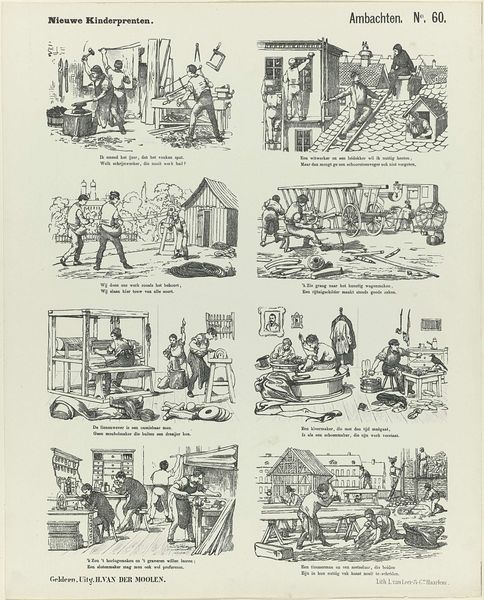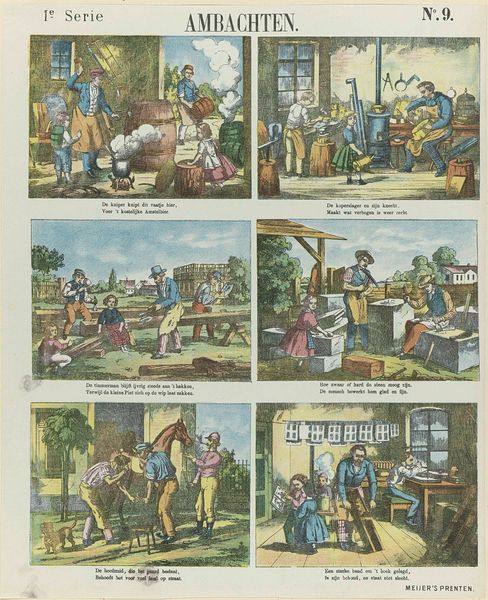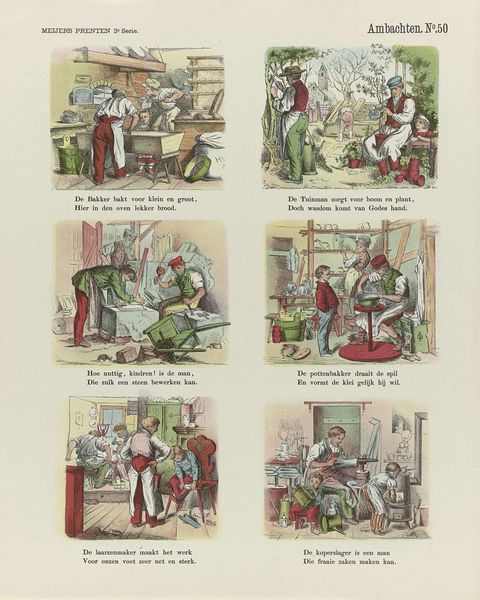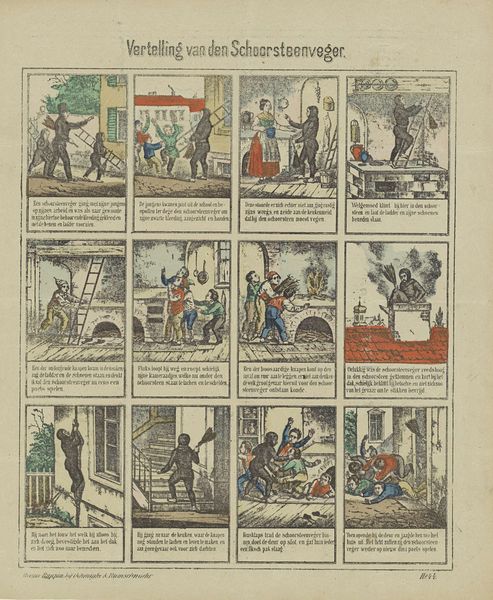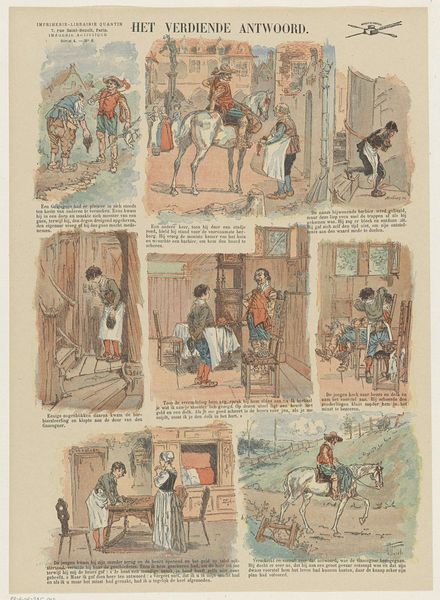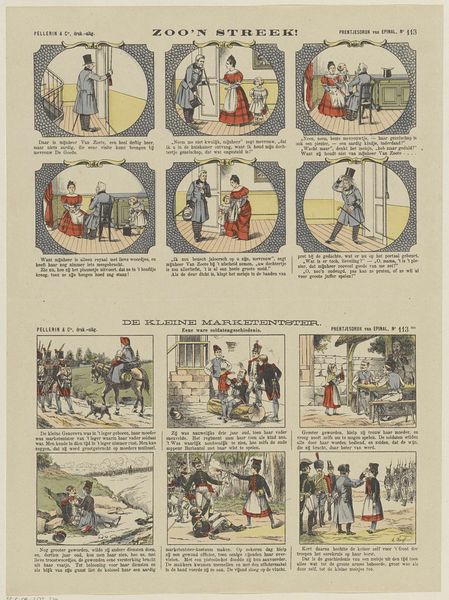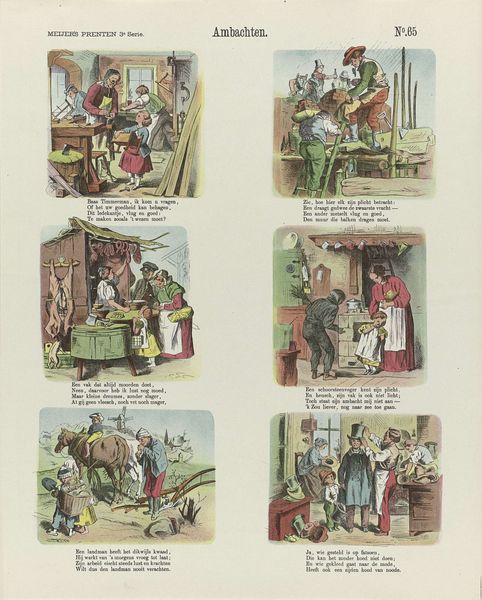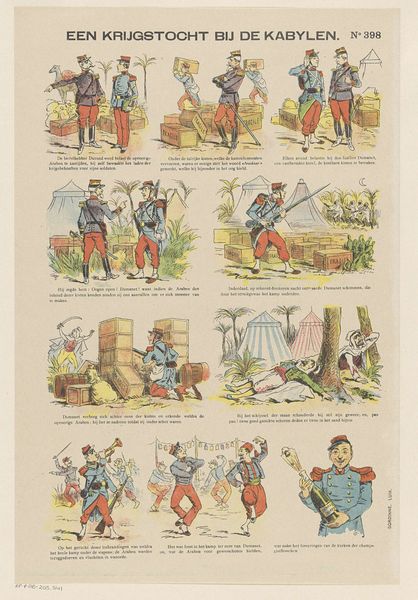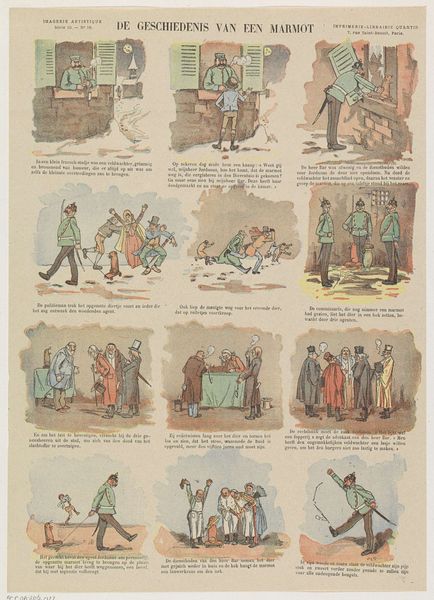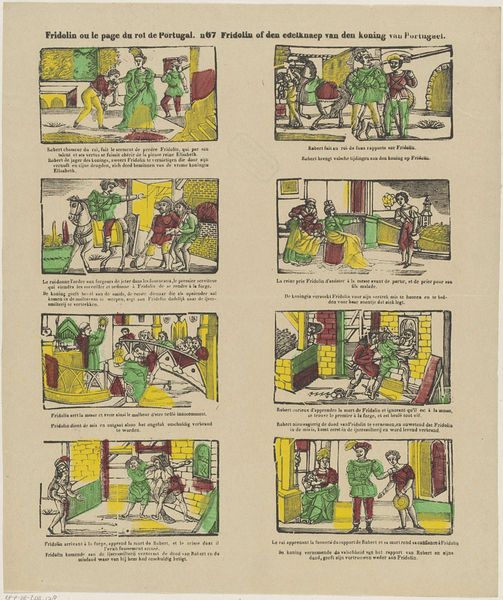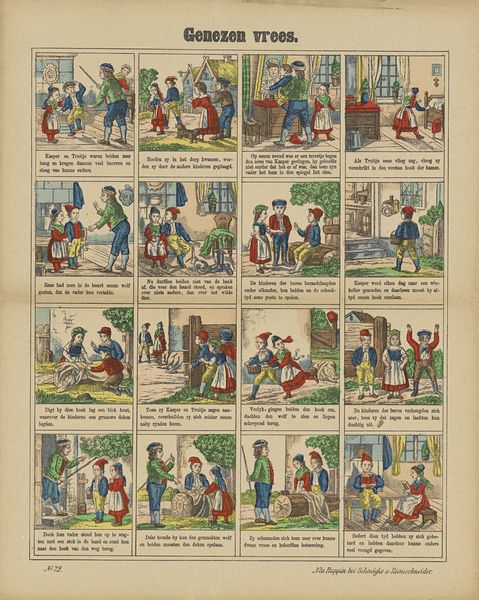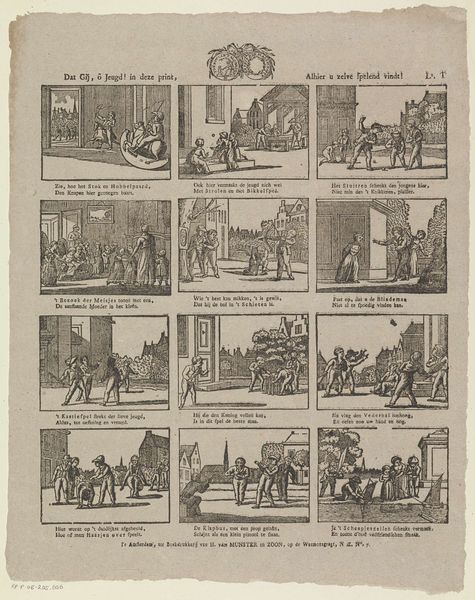
print, weaving, woodcut
#
narrative-art
#
comic strip
# print
#
weaving
#
traditional media
#
folk-art
#
woodcut
#
comic
#
genre-painting
#
academic-art
Dimensions: height 429 mm, width 344 mm
Copyright: Rijks Museum: Open Domain
Curator: This charming print, entitled "Ambachten" which translates to "Trades" or "Crafts," dates back to 1874. It appears to be a woodcut, possibly with some color added later. Editor: My first impression is that this looks like a precursor to a comic strip! The small vignettes and the clear depiction of various professions evoke a strong sense of narrative, almost like storyboarding. There's a definite nostalgic charm in the composition's ordered arrangement. Curator: The organization does serve a didactic function. It depicts a range of artisanal occupations popular in the late 19th century. What’s striking to me is the visual celebration of labor and its diversity within a community. We see everything from blacksmiths and carpenters to tailors and watchmakers, creating an almost encyclopedic record. Editor: Visually, I notice the flattened perspective and simplified forms, common in woodcut printing. However, there is great detail in how each trade’s tools and workspace are meticulously represented. Take, for example, the linen weaver: the complexity of his loom is fascinatingly rendered given the limitations of the medium. Curator: Absolutely. The weaver reminds us how certain crafts were perceived as central to the fabric of society – quite literally, I suppose. Each figure is defined by their actions. They collectively form a mosaic that reflects the social values and economic activities of the time. In each miniature panel, a story about the individual is unfolded into something much larger. Editor: I think this is true in an iconographic and formal sense: a record, an instructive image. But for a modern audience, "Ambachten" possesses a surprising emotional resonance, reminding us of human creativity and ingenuity and perhaps something that feels almost lost. Curator: It's interesting how a relatively simple image, rooted in documenting trades, still provides such a vivid lens onto the culture and societal structure. Editor: And structurally speaking, that tight organization across a flattened surface almost speaks to the standardization we might expect in modern media… so different and so alike, perhaps.
Comments
No comments
Be the first to comment and join the conversation on the ultimate creative platform.

